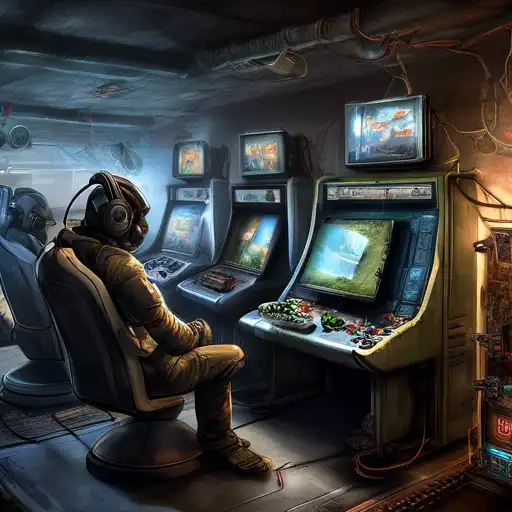The Revolutionary Journey of Gaming Technology Through the Ages
From the simple pleasures of Pong to the immersive worlds of virtual reality, gaming technology has undergone a monumental evolution. This journey reflects not just advancements in technology but also changes in how we interact with digital entertainment. Let's delve into the pivotal moments that have shaped the gaming industry into what it is today.
The Dawn of Gaming
The story of gaming technology begins in the 1950s and 1960s, with rudimentary games developed in academic settings. However, it was the release of Pong in 1972 that marked the birth of the video game industry. This simple table tennis simulation captivated audiences and laid the groundwork for the arcade era.
The Home Console Revolution
The late 1970s and early 1980s saw the introduction of home gaming consoles, with the Atari 2600 leading the charge. This era brought gaming into the living room, making it a staple of home entertainment. The subsequent video game crash of 1983 was a temporary setback, but it paved the way for Nintendo's NES, which revived the industry with iconic titles like Super Mario Bros.
The Rise of 3D Graphics
The 1990s were a golden age for gaming technology, with the advent of 3D graphics. Consoles like the Sony PlayStation and Nintendo 64 transformed gaming experiences, offering worlds that were more immersive and visually stunning than ever before. This era also saw the rise of PC gaming, with titles like Doom setting new standards for first-person shooters.
The Online Gaming Boom
The turn of the millennium introduced the world to online gaming, connecting players across the globe. Games like World of Warcraft and platforms such as Xbox Live revolutionized how we play, fostering communities and competitive gaming. This period also marked the beginning of mobile gaming, with smartphones becoming a dominant platform for casual gamers.
The Future of Gaming Technology
Today, gaming technology continues to evolve at a rapid pace. Virtual reality (VR) and augmented reality (AR) are pushing the boundaries of immersion, while cloud gaming services like Google Stadia promise to make high-quality gaming more accessible than ever. As we look to the future, technologies like AI and machine learning are set to create even more dynamic and personalized gaming experiences.
The evolution of gaming technology is a testament to human creativity and innovation. From simple pixels to vast virtual worlds, each advancement has brought us closer to realizing the limitless potential of digital entertainment. As we stand on the brink of new technological frontiers, one thing is clear: the journey of gaming technology is far from over.
